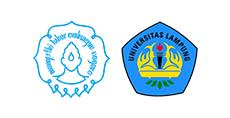Research Trends in the Use of Augmented Reality in Engineering Education: A Bibliometric Analysis
Abstract
Keywords
Full Text:
PDFReferences
Al-Azawi, R., Albadi, A., Moghaddas, R., & Westlake, J. (2019). Exploring the Potential of Using Augmented Reality and Virtual Reality for STEM Education. In Communications in Computer and Information Science (Vol. 1011). Springer International Publishing. https://doi.org/10.1007/978-3-030-20798-4_4
Barata, P. N. A., Filho, M. R., & Nunes, M. V. A. (2015). Consolidating learning in power systems: Virtual reality is applied to studying electric power transformers' operation. IEEE Transactions on Education, 58(4), 255–261. https://doi.org/10.1109/TE.2015.2393842
Chen, H., Feng, K., Mo, C., Cheng, S., Guo, Z., & Huang, Y. (2011). Application of augmented reality in engineering graphics education. ITME 2011 - Proceedings: 2011 IEEE International Symposium on IT in Medicine and Education, 2, 362–365. https://doi.org/10.1109/ITiME.2011.6132125
Criollo-C, S., Abad-Vásquez, D., Martic-Nieto, M., Velásquez-G, F. A., Pérez-Medina, J. L., & Luján-Mora, S. (2021). Towards a new learning experience through a mobile application with augmented reality in engineering education. Applied Sciences (Switzerland), 11(11). https://doi.org/10.3390/app11114921
Cubillo, J., Martín, S., Castro, M., & Meier, R. (2012). Control of a remote laboratory by augmented reality. Proceedings of IEEE International Conference on Teaching, Assessment, and Learning for Engineering, TALE 2012, 11–15. https://doi.org/10.1109/TALE.2012.6360297
Davidsson, M., Johansson, D., & Lindwall, K. (2012). Exploring the use of augmented reality to support science education in secondary schools. Proceedings 2012 17th IEEE International Conference on Wireless, Mobile and Ubiquitous Technology in Education, WMUTE 2012, 218–220. https://doi.org/10.1109/WMUTE.2012.52
Di Serio, Á., Ibáñez, M. B., & Kloos, C. D. (2013). Impact of an augmented reality system on students’ motivation for a visual art course. Computers and Education, 68, 586–596. https://doi.org/10.1016/j.compedu.2012.03.002
Gutiérrez, J. M., & Fernández, M. D. M. (2014). Applying augmented reality in engineering education to improve academic performance & student motivation. International Journal of Engineering Education, 30(3), 625–635.
Ibáñez, M. B., Di Serio, Á., Villarán, D., & Delgado Kloos, C. (2014). Experimenting with electromagnetism using augmented reality: Impact on flow student experience and educational effectiveness. Computers and Education, 71, 1–13. https://doi.org/10.1016/j.compedu.2013.09.004
Karagozlu, D., Kosarenko, N. N., Efimova, O. V., & Zubov, V. V. (2019). Identifying students’ attitudes regarding augmented reality applications in science classes. International Journal of Emerging Technologies in Learning, 14(22), 45–55. https://doi.org/10.3991/ijet.v14i22.11750
Kaur, D. P., Mantri, A., & Horan, B. (2021). A Framework Utilizing Augmented Reality to Enhance the Teaching–Learning Experience of Linear Control Systems. IETE Journal of Research, 67(2), 155–164. https://doi.org/10.1080/03772063.2018.1532822
Kilani, M., Torabi, K., & Mao, G. (2018). Application of virtual laboratories and molecular simulations in teaching nanoengineering to undergraduate students. Computer Applications in Engineering Education, 26(5), 1527–1538. https://doi.org/10.1002/cae.21940
Leutner, D. (2014). Motivation and emotion as mediators in multimedia learning. Learning and Instruction, 29, 174–175. https://doi.org/10.1016/j.learninstruc.2013.05.004
Martin, S., Diaz, G., Sancristobal, E., Gil, R., Castro, M., & Peire, J. (2011). New technology trends in education: Seven years of forecasts and convergence. Computers and Education, 57(3), 1893–1906. https://doi.org/10.1016/j.compedu.2011.04.003
Monroy Reyes, A., Vergara Villegas, O. O., Miranda Bojórquez, E., Cruz Sánchez, V. G., & Nandayapa, M. (2016). A mobile augmented reality system to support machinery operations in scholar environments. Computer Applications in Engineering Education, 24(6), 967–981. https://doi.org/10.1002/cae.21772
Papakostas, C., Troussas, C., Krouska, A., & Sgouropoulou, C. (2021). Exploration of Augmented Reality in Spatial Abilities Training: A Systematic Literature Review for the Last Decade. Informatics in Education, 20(1), 107–130. https://doi.org/10.15388/infedu.2021.06
Pastirmacioglu, B., Caliskan, S., Ozcan, D., & Uzunboylu, H. (2018). Determining a mobile Internet acceptance model of special education teacher candidates. International Journal of Interactive Mobile Technologies, 12(4), 32–42. https://doi.org/10.3991/ijim.v12i4.9198
Potkonjak, V., Gardner, M., Callaghan, V., Mattila, P., Guetl, C., Petrović, V. M., & Jovanović, K. (2016). Virtual laboratories for science, technology, and engineering education: A review. Computers and Education, 95, 309–327. https://doi.org/10.1016/j.compedu.2016.02.002
Prit Kaur, D., Mantri, A., & Horan, B. (2022). Design implications for an adaptive augmented reality-based interactive learning environment for improved concept comprehension in engineering paradigms. Interactive Learning Environments, 30(4), 589–607. https://doi.org/10.1080/10494820.2019.1674885
Quintero, E., Salinas, P., González-Mendívil, E., & Ramírez, H. (2015). Augmented Reality app for Calculus: A Proposal for the Development of Spatial Visualization. Procedia Computer Science, 75(Vare), 301–305. https://doi.org/10.1016/j.procs.2015.12.251
Singh, G., Mantri, A., Sharma, O., Dutta, R., & Kaur, R. (2019). Evaluating the impact of the augmented reality learning environment on electronics laboratory skills of engineering students. Computer Applications in Engineering Education, 27(6), 1361–1375. https://doi.org/10.1002/cae.22156
Wulandari, I., Irwansyah, F. S., Farida, I., & Ramdhani, M. A. (2019). Development of students’ submicroscopic representation ability on molecular geometry material using Augmented Reality (AR) media. Journal of Physics: Conference Series, 1280(3). https://doi.org/10.1088/1742-6596/1280/3/032016
YILDIZ, E. P. (2018). Trends of augmented reality applications and research throughout the world: Meta-analysis of thesis, articles, and papers. Uluslararası Mühendislik ve Teknoloji Araştırmaları Dergisi, 3(1), 12–27. http://dergipark.gov.tr/ijente/issue/41712/475891













